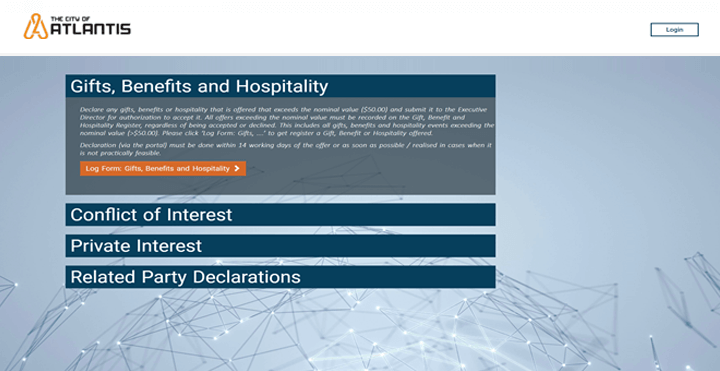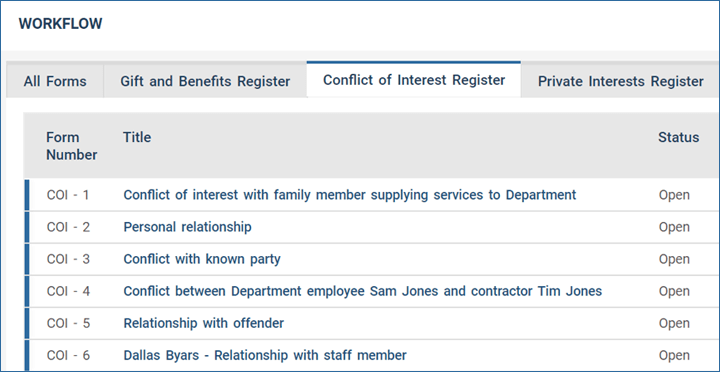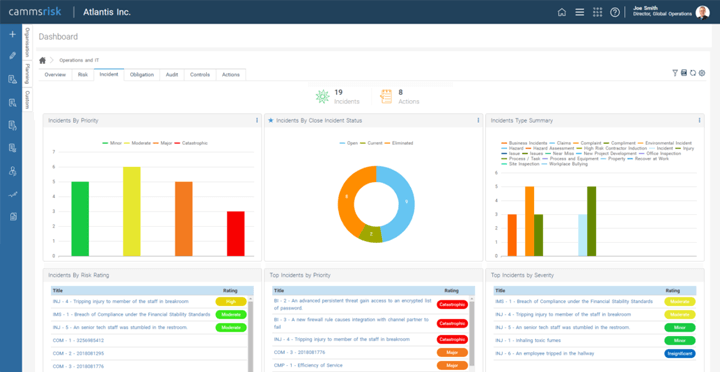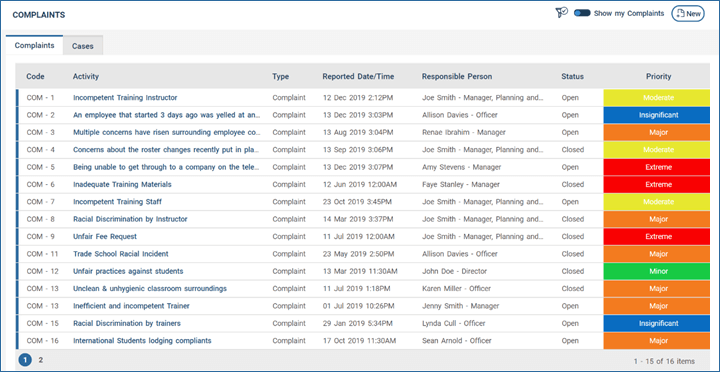What Can Camms.Service Do for You?
Camms.Service has many varied capabilities, which include:
- Automated business workflows.
- Centralised registers which give easy access to information.
- A built-in array of email and SMS notifications.
- An external reporting portal that allows third-party vendors/contractors to submit forms and registrations.
- Capability to integrate with external systems using APIs.
Organisations can use Camms.Service to keep track of any register; simplify the collation, management, and assessment of any business process; capture, investigate, monitor, and report with ease; improve governance processes and increase accountability.
Learn more about the key system functions of the portal and the different types of registers available by watching our informative webinar on this topic.
 Camms service portal
Camms service portal
 Camms service workflow
Camms service workflow
 Camms service dashboard
Camms service dashboard
 Camms service complaints
Camms service complaints
Camms.Service Portal and Reporting
There are several forms, templates, and processes that employees need to run through as part of their role, and Camms.Service allows an organisation to systemise those workflows, store them in a centralised register and manage the analytics and reporting.
The portal can engage various people within an organisation, providing a step-by-step approach to completing different forms. Once that process is completed, all records are stored centrally within the Camms.Service register/s and can be used for reporting, investigating, or updating.
The front-end forms and workflows are very flexible, and organisations can configure it to reflect their needs.
See our webinar for more details regarding how the portal can be customised.
What Can You Use Camms.Service for?
Here are some of the numerous ways in which Camms.Service can be used to capture a variety of records and processes, and engage with people in useful ways.
Camms.Service is supported by a flexible and powerful workflow engine, and its capabilities are only going to evolve and expand with time.
Head to our webinar for an in-depth showcase where you can see how the portal can efficiently automate processes, provide valuable insights from collected data, and improve the governance process by making it more inviting for users to engage in the process of reporting and filling out information.














